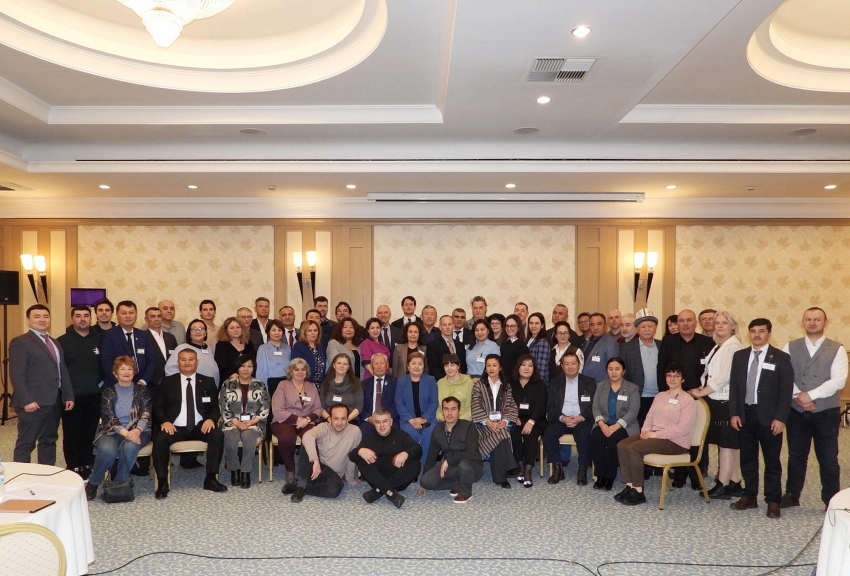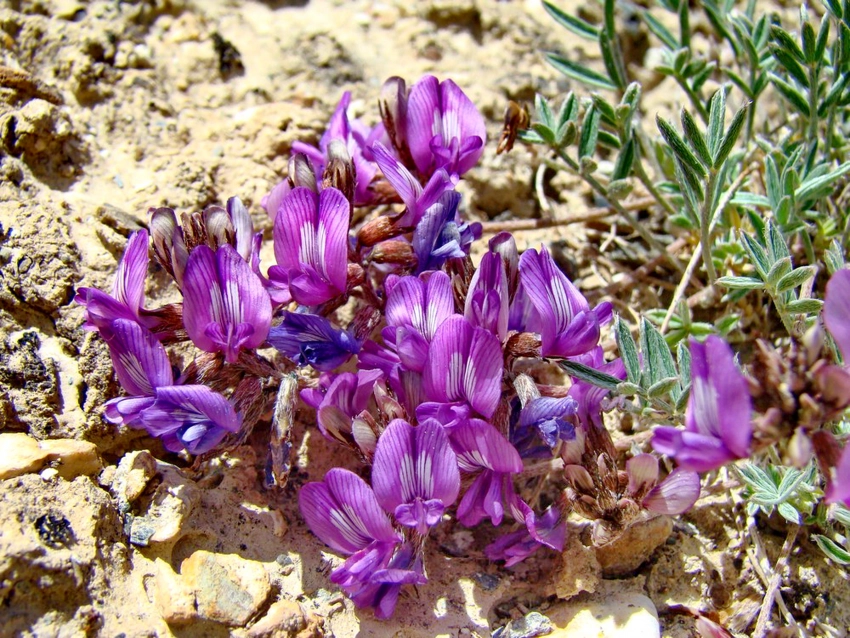KGZ31: Key Biodiversity Area Eastern Issyk-Kul

Square: 68 000 hectare
Category of KBA: D1
Species that initiated the selection of KBA [and other globally threatened species that are present in the KBA but have not been confirmed to meet the global criteria for KBA]: Anthropoides virgo, Netta rufina, Tadorna ferruginea, [Otis tarda], [Chlamydotis undulate], [Numenius tenuirostris]:
Availability of protected areas: (yes) In order to protect nature, the entire water area of Issyk-Kul and a three-kilometer strip of coast around the lake, as well as the Aksu and Jety-Оguz gorges, have been declared a reserve.
Settlements on the territory of the KBA: 14 villages, including: Zhenish, Kainar, Kurgak Airyk, Bogatyrevka, Zeleny Gay, Boz-Bulun, Mikhailovka, Yntymak, Sary-Bulun, Ak-Bulun, Pristan-Przhevalsk-1 urban settlement, Pristan-Przhevalsk urban settlement -3, "Koisary" base, etc.
Description:
Issyk-Kul does not freeze all year round, and for this reason it is called the "hot lake". The water in Lake Issyk-Kul is cool, slightly salty, amazingly bright blue, greenish near the shores. Issyk-Kul is the second most transparent lake in the world after Lake Baikal.
Lake Issyk-Kul is drainless, up to 80 relatively small tributaries flow into it. Of these, the largest are Tyup and Dzhergalan, flowing from the east. The water level in the lake changes cyclically (it rises, then falls); cycle occurs over several decades.
The coastline of Issyk-Kul, 688 km long, is leveled and slightly indented; in the eastern part of the lake there are two significant gulfs-estuaries - Tyupsky and Dzhergalansky, and in the southeast - Pokrovsky gulf near the village of the same name.
In contrast to the western part of the lake, the Eastern Issyk-Kul region is characterized by stormy vegetation due to a significant amount of precipitation (about 600 mm per year).
In the east, on the coast up to the foothills, inclusively at an altitude of 1630-1850 m, there is a zone of flat-foothill semi-desert, and at an altitude of 1850-2100 m - a foothill-mid-mountain steppe zone.
In accordance with the increase in precipitation as you move east, the strip of coastal semi-desert narrows more and more and is replaced by dry steppes occupying plains and foothills. Here, on poor brown soils, less often on gray soils, turf grasses such as feather grass, fescue, thin-legged, astragalus, and also semi-shrubs grow, wormwood, teresken and prickly caragana. In the east of the basin, dark chestnut steppe soils are widely developed for rainfed (non-irrigated) agriculture, the rest of the coast they are used for grazing livestock, mainly sheep.
On the northern slopes of the mountains bordering Lake Issyk-Kul, spruce forests are widespread, mainly from Schrenk spruce. Spruce grows in separate massifs, islands, interspersed with glades, scree and rock outcrops, alternating with meadows. The slopes of the mountains are rich in thickets of wild rose, barberry, currant, ashberry, juniper. In the lower reaches along the banks of the rivers, in more humid places, willows are abundant. In the east of the valley they form deciduous forests.
The fauna of the Issyk-Kul region includes 50 species of mammals, 285 - birds, 11 - reptiles, 31 - fish, 4 - amphibians.
In the eastern part of the basin in the foothills there are: eared hedgehog, tolai hare, gray hamster, mole voles, steppe polecat. The relic Tien Shan ground squirrel reaches the lower border of the forest. The piedmont steppes are home to such bird species as the Wheatear, Black Redstart, Bile Bunting and Buzzard.
In the settlements there are house sparrow and lighter - Spanish, small and ringed turtledoves, grey-headed goldfinch, myna, blackbird, great tit. Rooks, gray crows, starlings and hoopoes keep close to the villages. Of the mammals, the house mouse and the gray hamster are numerous.
Black-throated diver, bittern, black stork, mallard, gray duck, demoiselle crane, common gull, blue kingfisher nest at the coastal waters of the lake and at the confluence of rivers. A large number of bird species occur during wintering and migration. Among them often there are gray heron, swans, gray goose. In the 40s of the 20th century, over 100 thousand waterfowl wintered here. By the end of the 1960s, their numbers had halved. Thanks to the implementation of a 2 km protection zone and the prohibition of gun hunting on the coast, the number of wintering birds has slightly increased, but the problem of poaching still remains.
The waters of Issyk-Kul, rich in oxygen, are inhabited by 13 species of fish belonging to the families of carp, bindweed and salmon, including naked osman, carp, and gray char. The long-standing geographic separation and isolation of the lake (the cessation of communication with the Chu River) caused the development of a number of new fish traits that led to the formation of specific forms characteristic only of Issyk-Kul. Such often Issyk-Kul species include marinka, chebak, chebachok, sloth bear, minnow and gudgeon.
Altitudinal zonation.
Issyk-Kul has a great variety of biological species and ecosystems. This diversity is possible due to the phenomenon of altitudinal zonality and the difference in climatic conditions at different heights above sea level. For example, in the area of Barskoon and Karakol, climbing the mountains, you can see the change of the following zones:
• Plain foothill semi-desert, 1630-1850 m, mountain-valley soils, light brown and light chestnut, wormwood-cereal steppe with shrubs.
• Foothill-mid-mountain steppe zone, 1850-2100 m, dry grass-wormwood steppe, tall grass meadow steppes.
• Mid-mountain forest-meadow-steppe zone, 2100-3000 m, Tien Shan spruce with rich shrub undergrowth, forb-cereal lawns.
• High-altitude subalpine meadow-steppe zone, 3000-3400 m, flemis-forb, geranium-manzhetkovye and other meadows.
• High-altitude alpine meadows, 3400-3700 m, kobresia-forb meadows, rocks, talus, glaciers and moraines.
• Glacial-nival zone above 3500-3700 m, patches of alpine meadows, individual plants of chickweed, edelweiss, anemones, mosses and lichens, snowfields, glaciers.
In the mountains of Issyk-Kul one can observe a real mosaic of habitats and animals inhabiting them. In the same gorge, its shady bottom and northern slopes are covered with spruce forest, while the southern slopes are occupied by the steppe. Sometimes, for several hundred meters, swampiness (saz) is replaced by a meadow with thickets of juniper, and then scree or mountain steppe follows. Therefore, in the mountains in close proximity you can meet alpine, forest and steppe animals, inhabitants of talus and rocks, inhabitants of damp meadows.
Lake Issyk-Kul is under the protection of the Ramsar Convention.
The wetland ecosystems of Kyrgyzstan are represented by rivers, lakes, swamps and artificial reservoirs. In general, their area is small: they occupy an area of about 1017 thousand hectares, or 1% of the entire area of the country. The largest swampy areas are located in the southern part of the Issyk-Kul basin in the Ala-Bash valley. Here their area reaches 15 - 16 square meters. km.
The Ramsar Convention is an international agreement on wetlands of international importance, primarily as habitats for waterfowl. The Convention was adopted in February 1971 in Ramsar (Iran).
Currently, more than 150 countries have signed the convention, covering 1888 wetlands, which is approximately 185 million hectares of wetlands.
The purpose of the convention is to develop and manage an international network of wetlands that are essential for biodiversity conservation, climate stabilization and often also sources of fresh water. As an independent state, Kyrgyzstan officially joined the Ramsar Convention in 2002. This means that our state assumes obligations for the protection, management, research of wetlands, their rational use, the creation of natural reserves for waterfowl and other necessary measures.
In addition to Lake Issyk-Kul, the Son-Kul and Chatyr-Kul lakes are classified as Ramsar areas.
Ecological problems
Deforestation is one of the serious problems of the Issyk-Kul region. Logging in the mountains destroys mountain landscapes and undermines the water protection function of forests: the soil is washed away, landslides and mudflows occur, the rivers become so shallow that they not only become unsuitable for spawning of commercial lake fish, but even the water supply to Karakol and other settlements is interrupted.
The felling of the Isyk-Kul spruce forests and the grazing of livestock in them lasted for decades. Until recently, completely unacceptable systems of clear and corridor cuttings were used here.
KGZ31: Key Biodiversity Area Eastern Issyk-Kul













